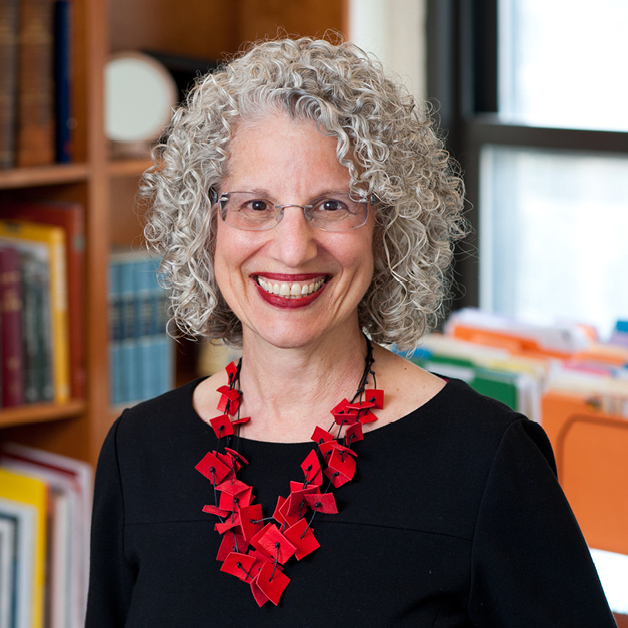Miracles of Today

One of the things I love most about Jewish holiday observances is their evolution over time and space even as core rituals remain. Hanukkah exemplifies this phenomenon. Established by the Hasmoneans to commemorate the victory of the Maccabees over Antiochus, Hanukkah in the Talmud (composed several centuries after these events) focuses on celebrating the miracle of the Temple oil lasting for eight days. With few prescribed mitzvot associated with the holiday, Hanukkah has long been ripe for creative interpretation: theological, sociological, culinary, musical, and artistic. The Hanukkiah itself illustrates its generativity, for it has been hewn from the humblest potato or the most ornate, intricately designed sterling silver; it can take the form of a tiny travel jigsaw puzzle or an enormous outdoor display.
In North America, as we know, Hanukkah took on new meaning. Living as a small minority within a predominantly Christian society, Jews attached increasing importance to the Jewishly minor holiday of Hanukkah as a way to demonstrate their Jewishness during the pervasive Christmas season: special candles; eight days of gifts, often for adults as well as children; presents elaborately wrapped in blue, white, and silver—colors that came to be associated with Hanukkah in contrast to the red and green of Christmas; special songs, choral revues, and pageants; Hanukkah cookies, potato latkes, or jelly doughnuts (or all three); dreydls—both decorative and functional—for games of chance; and annual Hanukkah parties, for family and friends or community-wide. Adopting any or all these traditions served to bolster Jewish pride and signified Jewish identification.
This year because of the pandemic, Hanukkah feels ripe for reinterpretation yet again. Observing Hanukkah in more modest ways reminiscent of earlier eras, we’ll light candles at home and skip large Hanukkah parties in favor of Zoom events. Given the economic challenges of the day, many will scale down our gift-giving. We’ll enjoy harmonies in our heads and forego preparing elaborate special foods for the small number of people in our pods. In this moment, Hanukkah signifies the Jewish resilience that I cherish. Hanukkah holds within it both the seeds of a nourishing message for our moment and the example of our ancestors’ adaptations. Just what we need always, but especially this year.
Gratitude for this dual perspective is compellingly captured by a one-letter addition to the second blessing that we recite when we light the Hanukkah candles, a formula also found in the opening of the text of the al hanissim prayer that we say on Hanukkah, Purim, and, in more recent Conservative siddurim, Yom Ha’atzmaut (Israel Independence Day). Rabbi Jules Harlow included the letter “vav” in Siddur Sim Shalom (1989) based on the ninth-century text of Rav Amram Gaon—the oldest prayerbook that we know of. Instead of expressing gratitude for miracles only at the time of the Maccabees, bayamim hahem bazeman hazeh (“in those days, at this season”), this text—by including the letter “vav”—changes the phrase’s meaning to one that thanks God for miracles that occurred bayamim ha-hem u-vazeman hazeh (“in those days and in these times”).
According to Rabbi Avram Reisner, this appears to have been the text that Maimonides used, and it was the version standard among the students of Rashi into the 14th century. But some rabbis objected because they felt that we should express thanks only for past miracles, not contemporary ones. Their objections apparently won out, and most prayer books today do not include that extra letter. But the sixteenth-century rabbi Mordecai Yoffe, known as the Levush for his work of practical Jewish law, Levush Malkhut (Royal Vestment), notes that:
There are those who are particular to say “in this time” without “and,” [such that] our thanks will be regarding the miracles that [God] performed for our ancestors at the time, year and month like the one in which we stand right now. And the thanksgiving will be only on the miracle of Hanukkah or Purim. However, it appears to me that it is better to say it with the “and” in order to encompass all of the miracles, and to specify the specific miracle that is now akin to that which happened. (OH 682:2)
Surely, Rabbi Harlow had in mind the miracle of the founding of the State of Israel when he channeled the reasoning of the Levush to reinsert the “vav” in his twentieth-century prayer book. But in this pandemic Hanukkah, I’m focused on smaller miracles that we see around us even during this challenging time. For many of us, it’s the rekindling of old friendships via Zoom, renewing our appreciation for the immense beauty of the natural world around us, and learning of the probability of an effective COVID-19 vaccine in the near future. For me, it’s a healthy grandson, born during this pandemic. We celebrate these miracles this year and cherish our good fortune to be heirs to a rich and nourishing tradition that can offer fresh meaning for every generation and provides opportunities to express gratitude for it.
And so, I will place special emphasis on the “vav” when I light the Hanukkah candles this year, to keep in mind all that we continue to be grateful for despite the many challenges that we face.
Wishing all of you a hag urim sameah—a joyous Hanukkah!
The publication and distribution of the JTS Commentary are made possible by a generous grant from Rita Dee (z”l) and Harold Hassenfeld (z”l).



